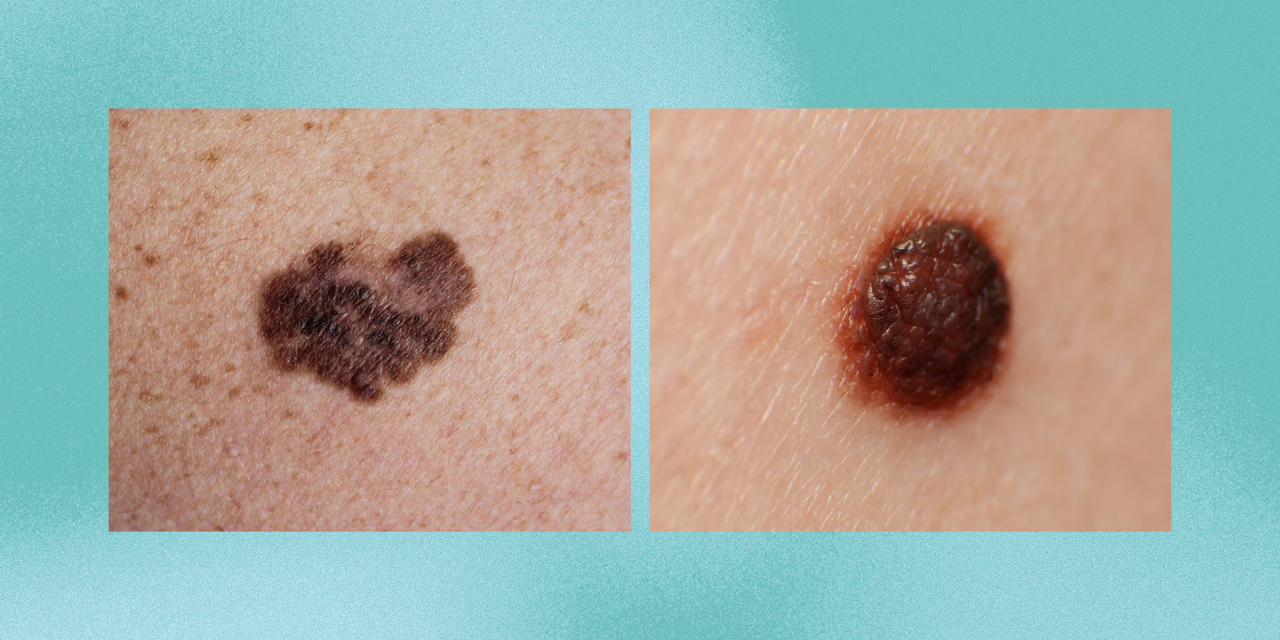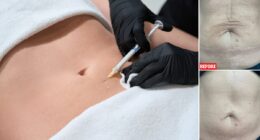A less common and more aggressive form of melanoma, nodular melanoma, appears as growths that are firm and dome-shaped, like nodules (hence the name). It doesn’t always follow the ABCDEs and is often mistaken for benign skin growths like blood blisters or acne. For example, these nodules can be skin-colored or pink and lack pigmentation like a traditional mole. Nodular melanoma is invasive and spreads quickly, so it’s even more crucial to catch it early.
Back to top
Are there other symptoms of skin cancer to be aware of?
Again, skin cancer also includes squamous cell and basal cell carcinomas, which are different from melanomas. According to the American Cancer Society (ACS), these conditions form in the outer layer of your skin, called the epidermis, and are typically slower growing and less likely to spread to other organs.
Still, you’ll want to catch either early if you can help it, before it grows deeper and requires more invasive removal and treatment. In addition to checking for new or changing moles, the AAD recommends also being on alert for these signs:
- A dome-shaped skin growth
- A scaly patch of skin that persists for a few weeks
- A sore that never seems to heal, or one that heals and comes back
- A brown or black streak underneath a nail
- A spot that itches or bleeds, especially if it bleeds spontaneously (as in, not because you scratched it)
“Basal cell and squamous cell carcinomas are generally not pigmented but can follow some of the ABCDEs,” Dr. Berger adds.
READ RELATED: 10 Best Backpack Coolers for Your Next Outdoor Adventure
Back to top
When and how to do a skin check on yourself
The Skin Cancer Foundation recommends getting a professional full-body skin exam once a year. And while there are no official guidelines on how often to do self-checks, the ACS notes that many doctors suggest scanning yourself once a month—especially if you have a personal or family history of skin cancer.
It’s a good idea to be strategic about this, too, so you cover all areas: The ACS recommends checking your skin in a well-lit room in front of a full-length mirror and using a handheld mirror (or the help of a loved one) to see hidden spots like the backs of your thighs, your back, and your scalp.
Here’s how to do a skin check thoroughly and efficiently, per the ACS:
- After a bath or shower, look in the mirror and inspect your face, ears, neck, chest, and stomach. If you have breasts, lift them up and take a peek at the skin underneath.
- Check your armpits, arms, the tops and palms of your hands, in between your fingers, and under your fingernails.
- Sit down and look over the front of your thighs, shins, tops of your feet, in between your toes, and under your toenails.
- Grab your hand mirror (or loved one) and look at the bottoms of your feet, your calves, and the backs of your thighs. Check your back, butt, genital area, and the back of your neck and ears, using both your wall and hand mirror if you need to get a better angle.
- Use a comb or hair dryer to part your hair so you can check your scalp.






